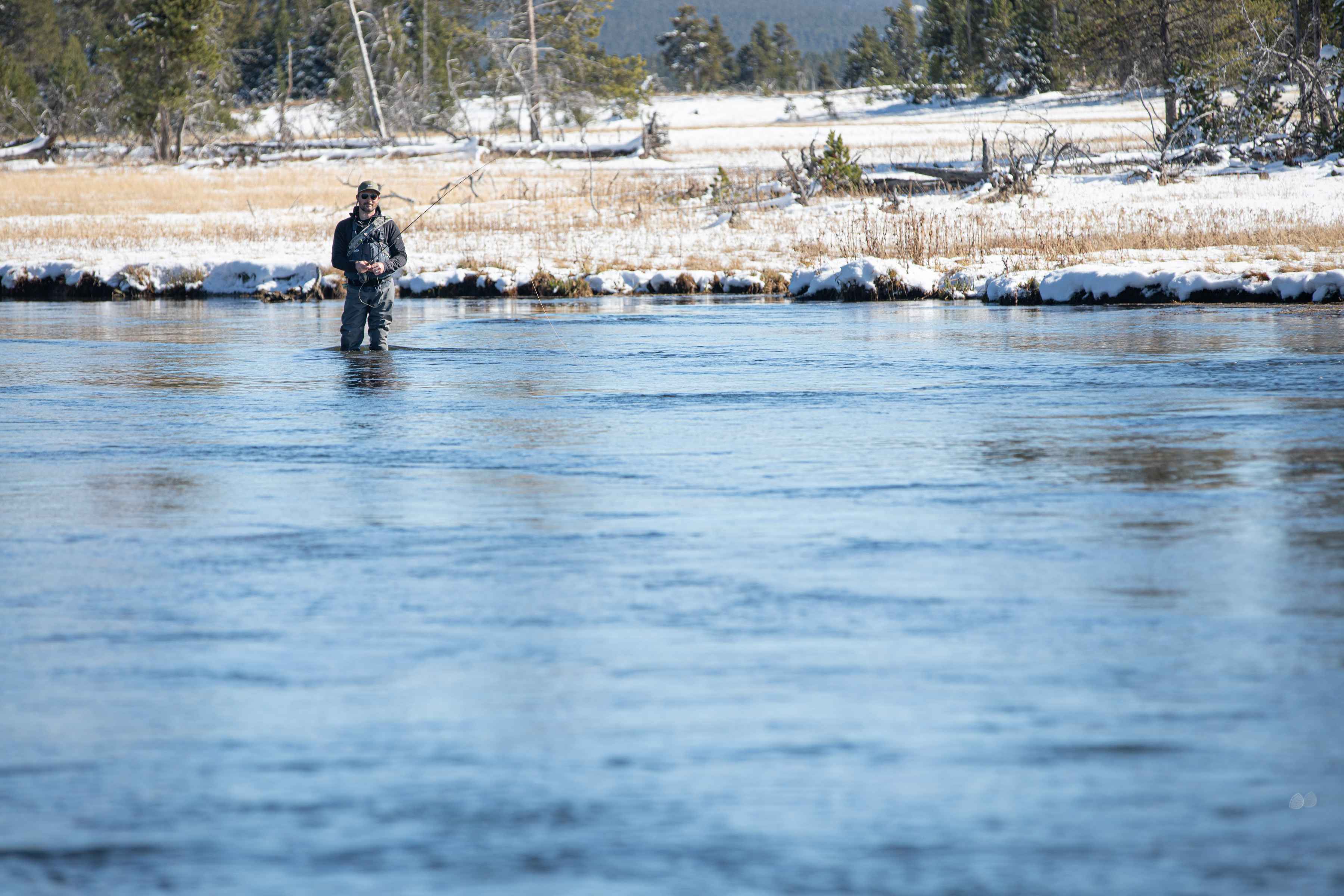Winter fly fishing can be as rewarding as any other season if you understand the nuances. While cold weather and limited insect activity might discourage some, trout continue to feed throughout winter.
Water Matters:
- Focus on rivers influenced by spring water or bottom-release dam flows (tailwaters) for favorable conditions.
- Tailwaters like Blue River, Taylor River, Green River, White River, and Farmington River can be productive but might attract more anglers.
Bug Hatches:
- Despite the cold, midges hatch even in winter, offering exciting dry-fly opportunities.
- On warmer days, baetis mayflies can hatch, with Blue-winged Olive patterns being effective.
Subsurface Tactics:
- Euro-nymphing is a successful technique during winter. High-stick a double-nymph rig or drift nymphs under an indicator.
- Tailor your nymph selection to local hatches, mimicking stoneflies, caddis, or midges.

Essential Flies:
- Griffith’s Gnat (sizes 18-22): Mimics midge clusters during dry-fly opportunities.
- Prince Nymph (sizes 8-10): Heavy and gaudy, imitating stonefly or caddis nymphs.
- Girdle Bug: A simple and effective weighted nymph, excellent for winter trout.
- Copper John (sizes 18-22): Versatile and visible, imitating caddis or mayfly nymphs.
- Perdigon Nymph: A Euro-nymphing staple with a fast sink rate and high visibility.
- Woolly Bugger: Effective for imitating sculpins, offering a change from small winter bugs.
Stay Warm and Safe:
- Wear non-cotton layers, neoprene waders, and double socks for insulation.
- Protect against wind with a face-gaiter and wear a fleece beanie.
- Dress in waterproof layers and stay hydrated.
- Exercise caution to prevent hypothermia.
Just Go Fishing:
- Winter angling is doable with proper preparation.
- Be informed, stay safe, and enjoy the experience instead of staring at a screen.
As you just learned fly fishing in the winter is not for the faint of heart. However, if you put on warm clothes and persevere through adversity you will be rewarded.
Image/Source: Hatch





